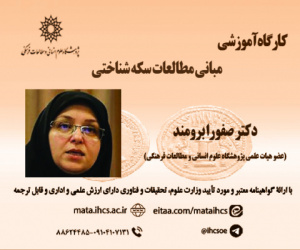رابطه بین کمال گرایی عاشقانه و بی ثباتی زناشویی: نقش تعدیلگر الگوهای ارتباطی (مقاله علمی وزارت علوم)
درجه علمی: نشریه علمی (وزارت علوم)
آرشیو
چکیده
مقدمه: بی ثباتی زناشویی یکی از عوامل ازبین رفتن بنیان خانواده ها در سه دهه اخیر بوده است و می تواند، زمینه ساز طلاق زوجین شود؛ ازاین رو بررسی عوامل مرتبط با این متغیر اهمیت بسزایی دارد. هدف پژوهش حاضر بررسی نقش تعدیلگر الگوهای ارتباطی در رابطه بین کمال گرایی عاشقانه و بی ثباتی زناشویی بود. روش: پژوهش حاضر از نوع پژوهش های همبستگی و به روش مدل یابی معادلات ساختاری انجام شد. جامعه آماری پژوهش تمامی زنان و مردان متأهل شهرستان گتوند استان خوزستان در سال ۱۴۰۱ بود که به روش نمونه گیری دردسترس ۲۰۳ نفر از این جامعه (۱۲۹ نفر زن و ۷۴ نفر مرد) به عنوان نمونه انتخاب شد. ابزار پژوهش پرسش نامه الگوی ارتباطی کریستنسن و سولاوای (۱۹۹۱)، پرسش نامه بی ثباتی زناشویی ادواردز (۱۹۸۷) و پرسش نامه کمال گرایی عاشقانه مت و لافونتین (۲۰۱۲) بود. تجزیه وتحلیل داده های به دست آمده در دو سطح آمار توصیفی و استنباطی و از طریق مدل یابی معادلات ساختاری، تحلیل مسیر و تحلیل چند گروهی با استفاده از نرم افزارهای SPSS-26 و SMART PLS انجام شد . یافته ها: یافته های این پژوهش نشان داد که الگوی ارتباطی اجتناب متقابل (0.145=β، 0.001p<)، توقع/کناره گیری (0.658 =β، 0.001p<) و کمال گرایی عاشقانه دگر محور رابطه مثبت معناداری دارند و رابطه منفی معناداری بین الگوی ارتباطی سازنده متقابل0.345-=β ، 0.001p<) و کمال گرایی عاشقانه خودمحور با بی ثباتی زناشویی وجود دارد. همچنین الگوهای ارتباطی نقش تعدیلگری را در رابطه بین کمال گرایی عاشقانه و بی ثباتی زناشویی ایفا کردند. نتیجه گیری: در مجموع باتوجه به نتایج پژوهش حاضر به نظر می رسد، الگوهای ارتباطی و کمال گرایی عاشقانه دو عامل تأثیرگذار در بی ثباتی زناشویی هستند؛ بنابراین به مشاوران و روان شناسان خانواده پیشنهاد می شود، آموزش های لازم در این زمینه را به زوجین ارائه دهند.The Relationship Between Romantic Perfectionism and Marital Instability: The Moderating Role of Communication Patterns
Introduction: Introduction: Marital instability has emerged as a significant contributor to the erosion of family foundations over the past three decades, often culminating in divorce. Understanding the factors associated with this issue is therefore critical. This study aimed to explore the moderating role of communication patterns in the relationship between romantic perfectionism and marital instability. Method: This correlational study employed structural equation modeling. The research population consisted of all married men and women in Gotvand County, Khuzestan Province, in 1401 (Iranian calendar year). A sample of 203 participants (129 women and 74 men) was selected using convenience sampling. Data were collected using the Christensen and Sullaway Communication Pattern Questionnaire (1991), the Edwards Marital Instability Questionnaire (1987), and the Matte and LaFontaine Romantic Perfectionism Questionnaire (2012). The data were analyzed at descriptive and inferential levels through structural equation modeling, path analysis, and multigroup analysis, utilizing SPSS-26 and SMART PLS software. Results: The results revealed that the communication patterns of mutual avoidance (β=0.145, p<0.001) and expectation/withdrawal (β=0.658, p<0.001), along with other-oriented romantic perfectionism, exhibited a significant positive relationship with marital instability. Conversely, the mutual constructive communication pattern (β=-0.345, p<0.001) and self-oriented romantic perfectionism showed a significant negative relationship with marital instability. Additionally, communication patterns were found to moderate the relationship between romantic perfectionism and marital instability. Conclusion: Overall, the findings suggest that communication patterns and romantic perfectionism are key factors influencing marital instability. Consequently, it is recommended that counselors and family psychologists offer targeted training to couples to address these dynamics effectively.







